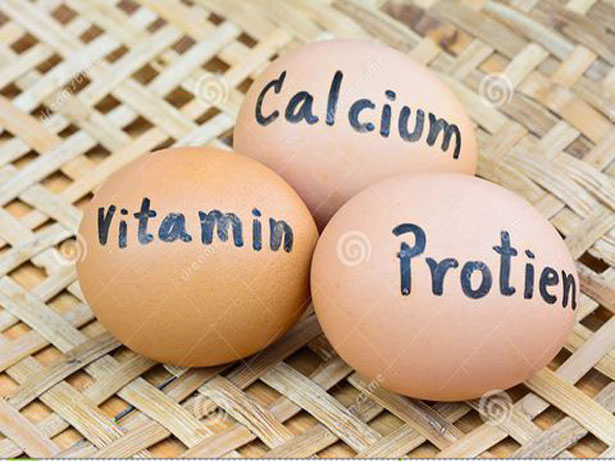Researcher of Regional APTA / DDD / SAA
INTRODUCTION
Second cycle layers produce larger eggs, with consequent increase in eggshell quality problems, causing expressive losses. Although forced mold is frequently used, there is little information on the nutritional levels recommended for the post-mold period. In commercial layers, there is a great interest in calcium metabolism because as the hens age, eggshell quality decreases. Consequently, there is an increase in egg loss, which has a negative impact on the farmer's income. The intake of inadequate calcium amounts may promote skeleton abnormalities, increased mortality, reduction in the size and in the number of eggs produced, and poor eggshell quality leading to high rates of cracked eggs (Maynard et al., 1984).
As the bird ages, there is a decrease in 1-a-hydroxylase – the enzyme responsible for the activation of vitamin D metabolite in the kidneys –, and a reduction in the efficiency of calcium absorption. This causes poorer eggshell quality, and increase in egg loss. In addition, the larger size of the eggs produced by these older layers also results in lower eggshell quality, as the rate of egg size increase is higher than the rate of eggshell weight increase (Adams & Bell, 1998). Older layers also have diminished capacity of replacing the calcium lost during hypocalcemia periods as compared to young layers (Elaroussi et al., 1994).
When there is adequate calcium intake, bird needs can be supplied by increasing its intestinal absorption. However, if intake is low, increasing intestinal absorption will not be sufficient to ensure calcium supply.
The particle size of calcium sources may influence its availability to the bird. As eggshell is usually formed during the night, when birds do not eat feed, the advantage of the use of coarser particles is its slower passage through the gastrointestinal tract. This makes calcium available for eggshell formation, with consequent lower mobilization of bone calcium by the bird (Harms, 1982). When coarser, less soluble limestone particles are added to the feed, calcium will be present in the gastrointestinal tract even during the night, due to its solubilization and availability for absorption to the blood (Miles, 2000).
From nutritional point of view, the smaller the feed particle, the larger its contact with the digestive juices, thereby favoring digestion and absorption. In contrast, from the feed mill standpoint, the higher the feed particle, the higher the energy savings and grinding efficiency (tons/hour).
This study aimed at evaluating dietary calcium level and limestone particle size on the production performance of commercial (Hy-Line Brown) layers in the second cycle of lay.

MATERIAL AND METHODS
The experiment was carried out at the facilities of the Research and Development Unit of Brotas. A total number of 288 commercial Hy-Line Brown layers, with 83 weeks at the beginning of the experiment, was used. Birds were housed in 36 cages (1.00m length, 0.45m depth, and 0.40m height), containing an internal transversal partition, each housing four birds; therefore, eight birds per cage. After forced molting, birds were submitted to the same management and feeding. At the beginning of the experiment, body weight and egg production were standardized.
A completely randomized experimental design in a factorial arrangement of 2x3, with two calcium levels (3.5 and 4.0%) and three limestone particle size compositions: 100% fine limestone (FL), 30% coarse limestone (CL) + 70% fine limestone (FL), and 50% (CL) + 50% (FL), with six replicates of eight birds each.
Experimental feeds were formulated on corn and soybean meal basis, taking into consideration raw material composition as in Rostagno et al. (2000), and are shown in Table 1.

Eggs from each treatment were daily collected and counted for egg production evaluation. Eggs and feed residues from each treatment were weekly collected for performance evaluation. Egg weight (g), egg production (%), egg mass (%),feed intake (g), feed conversion ratio (kg/dz and kg/kg), mortality (%), and egg loss (%) were measured.
An experimental period of 112 days was determined as a function of analyses. Data were submitted to analysis of variance, and means were compared using the test of Tukey (p<0.05), using the software (Ferreira, 2000).
Contact us:
Mr. Steve (International Sales Manager)
Phone: +84 936 181 398
Email: export4@shcgroup.vn
Skype: export4@shcgroup.vn




